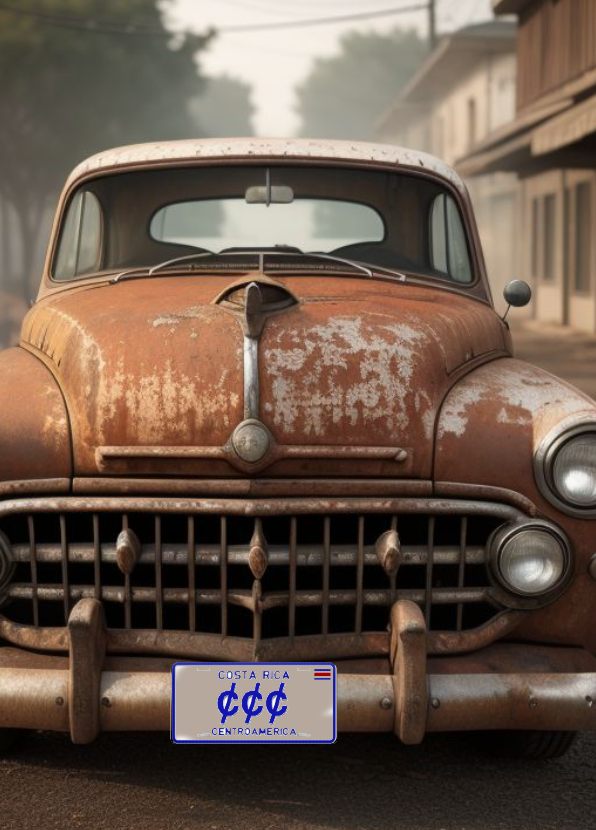
Why Are Cars in Costa Rica More Expensive?
Costa Rica, with its stunning landscapes, rich biodiversity, and vibrant culture, attracts visitors from around the world seeking adventure and relaxation in paradise. However, for residents of this Central American nation, the dream of owning a car can often come with a hefty price tag. Despite its relatively small size and developing economy, Costa Rica is known for having some of the highest car prices in the world. In this article, we’ll explore the factors contributing to the high cost of cars in Costa Rica, shedding light on the challenges faced by consumers and the automotive industry in this tropical haven. Several factors contribute to the high cost of cars in Costa Rica. Here we reveal several of the most impactful factors.
Import Tariffs and Taxes
Costa Rica imposes high tariffs and taxes on imported vehicles. These taxes can significantly increase the final price of a car, making them more expensive for consumers.
Limited Competition
The automotive market in Costa Rica has relatively few competitors, leading to less price competition among dealerships. Limited competition can result in higher prices for consumers.
Imagine a scenario where the demand for Toyota Land Cruiser Prado in Costa Rica suddenly surges due to various factors such as an increase in disposable income, a growing trend towards outdoor activities and off-road adventures, or a perception of the vehicle as a status symbol. However, simultaneously, there’s a limited availability of the Land Cruiser Prado in the Costa Rican market due to production constraints or logistical issues.

As the demand for the Land Cruiser Prado outweighs its supply, dealerships across Costa Rica find themselves with limited inventory. This scarcity creates a sense of urgency among consumers who are eager to purchase the highly sought-after vehicle. In response to the heightened demand and limited availability, dealerships may adopt pricing strategies to capitalize on the situation.
Firstly, dealerships may raise the prices of the Land Cruiser Prado, taking advantage of the basic economic principle of supply and demand. With fewer units available, dealerships can command higher prices, knowing that consumers who are particularly keen on owning the vehicle may be willing to pay a premium to secure one.
Secondly, dealerships may implement non-price strategies to manage the limited availability. For example, they may introduce reservation lists or bidding systems, where interested buyers compete for the few available units. This can further drive up prices as consumers engage in bidding wars to secure their desired vehicle.
Additionally, the limited availability of the Land Cruiser Prado may lead to increased competition among consumers. Those who are unable to purchase the vehicle immediately may feel compelled to act quickly when new units become available, further intensifying demand and potentially inflating prices.
Overall, in a scenario where the limited availability of the Toyota Land Cruiser Prado coincides with high demand in Costa Rica, consumers may experience higher than normal prices as dealerships leverage the scarcity to maximize profits. This phenomenon highlights the intricate interplay between supply, demand, and market dynamics in shaping pricing outcomes.
Transportation Costs
Costa Rica is geographically isolated, which can increase transportation costs for importing vehicles. These costs are often passed on to consumers in the form of higher prices.
Exchange Rates
Fluctuations in exchange rates can impact the cost of imported vehicles. If the local currency weakens against the currency of the country where the cars are manufactured, it can lead to higher prices for consumers.

Imagine a scenario where Costa Rica experiences a significant weakening of its currency relative to the currencies of its trading partners. This weakening could be due to various factors such as economic uncertainty, political instability, or a widening trade deficit.
Now, let’s say that Costa Rica heavily relies on importing cars from the United States to meet the demands of its domestic market. The cars imported from the United States are priced in US dollars.
As the currency of Costa Rica weakens, it means that each unit of Costa Rica’s currency now has less purchasing power relative to the US dollar. Consequently, when Costa Rica’s importers need to purchase cars from the United States, they will need to exchange more units of their currency to obtain the same amount of US dollars.
This increase in the cost of converting currency means that the price of imported cars from the United States will rise for consumers in Costa Rica. The importers may choose to pass on some or all of this increased cost to consumers by raising the prices of imported cars.
As a result, consumers in Costa Rica will experience higher prices for imported cars, making them less affordable compared to domestically produced vehicles or cars from other sources. This could lead to a decline in demand for imported cars and potentially impact the profitability of import-dependent businesses in Costa Rica’s automotive industry.
Regulatory Requirements
Costa Rica has specific regulatory requirements for vehicles, such as safety and emissions standards, which can add to the cost of importing and selling cars in the country. These requirements are administered through the DEKRA program in Costa Rica. This rarely happens for modern, stock vehicles that naturally meet these requirements. However, custom built or modified vehicles are subject to costs associated with bringing vehicles into standard.
Luxury Taxes
Costa Rica imposes luxury taxes on vehicles with higher value or features, further increasing the cost of purchasing cars, particularly those with advanced features or larger engine sizes.
A luxury tax is a type of tax imposed by governments on goods or services that are considered non-essential or luxurious. It is typically applied to products or services that are considered to be indulgences or symbols of wealth, such as high-end cars, jewelry, yachts, and certain types of clothing. Luxury taxes are often levied as a percentage of the purchase price above a certain threshold, with the aim of generating revenue for the government and redistributing wealth by taxing those who can afford luxury items more heavily. The implementation of luxury taxes can vary widely between different jurisdictions, with some governments choosing to exempt certain items or setting different tax rates based on the perceived level of luxury.
These factors combine to make cars in Costa Rica more expensive compared to other countries, despite similar models being available at lower prices elsewhere.